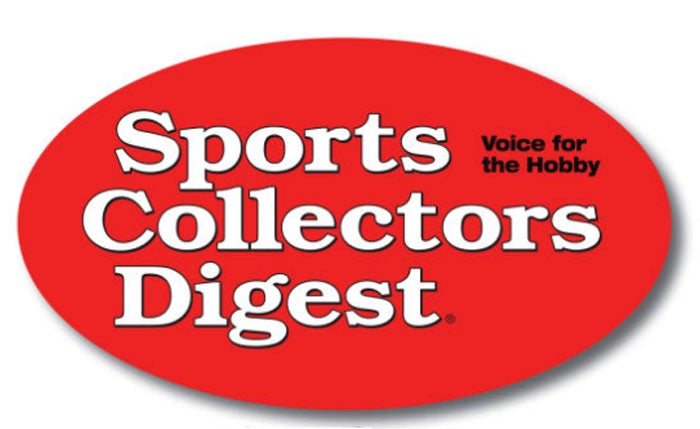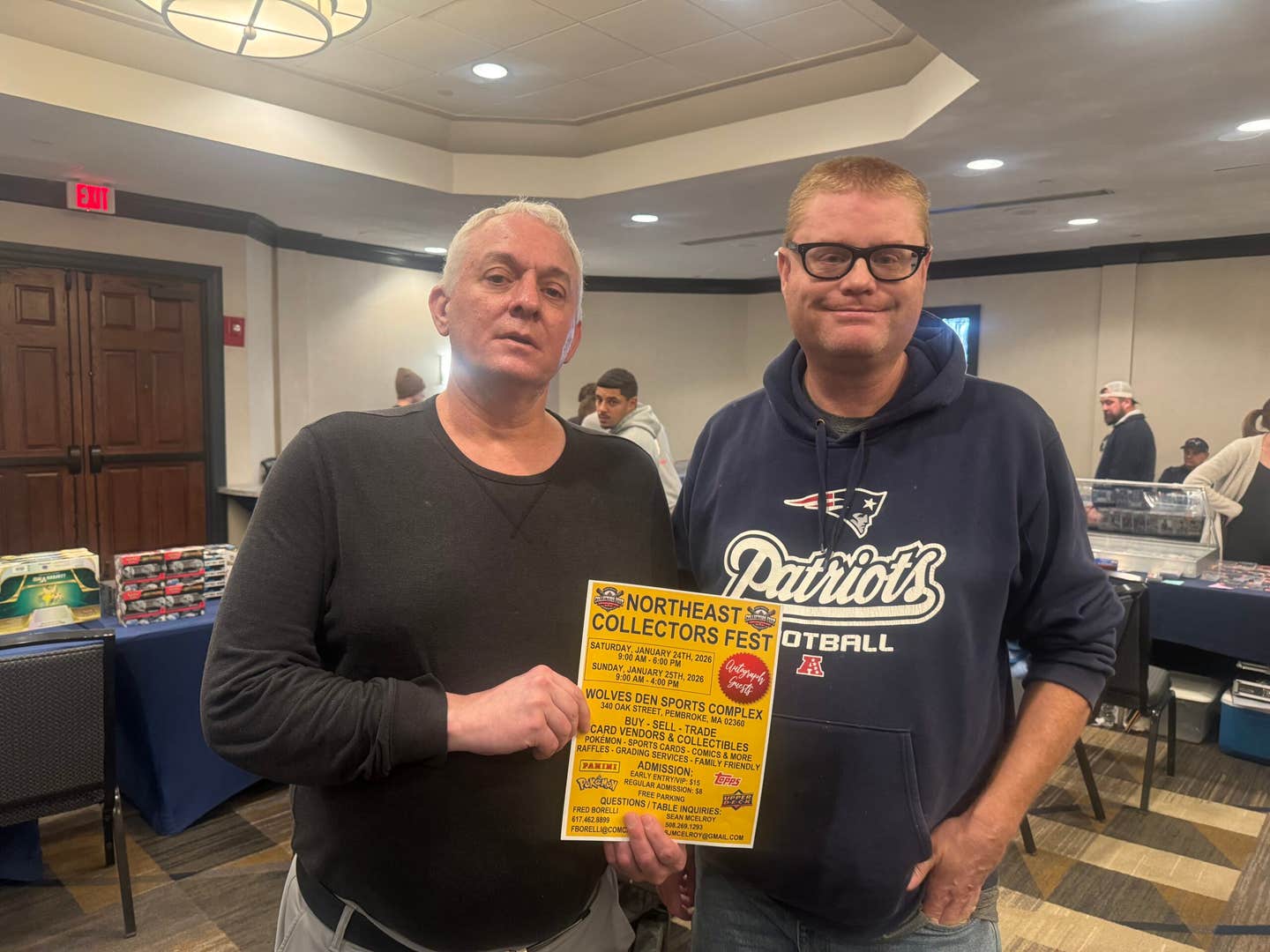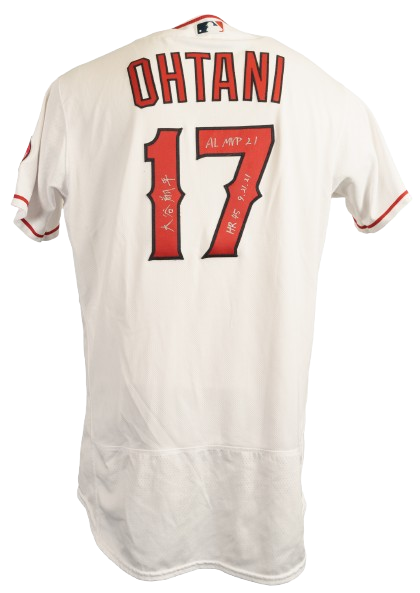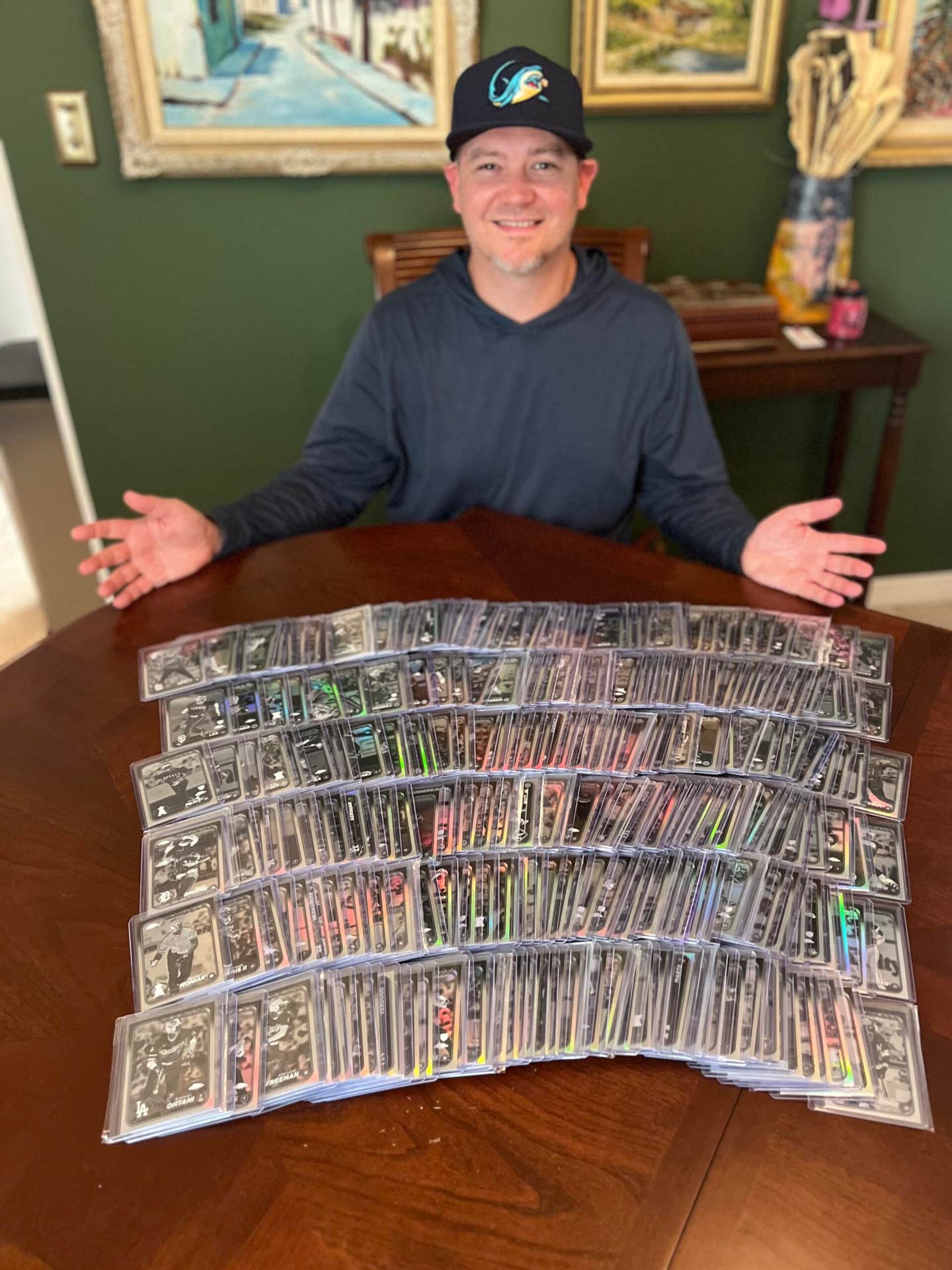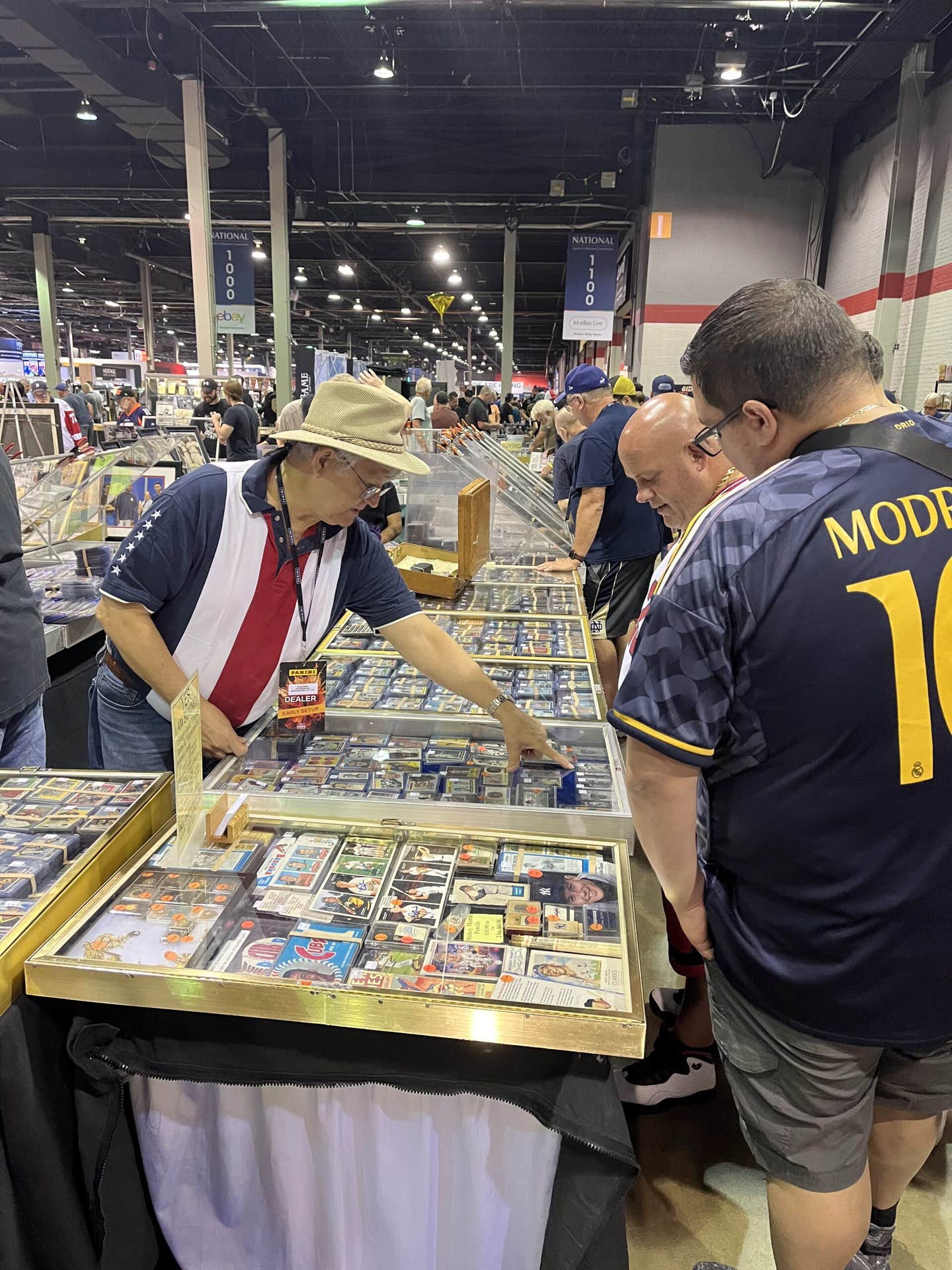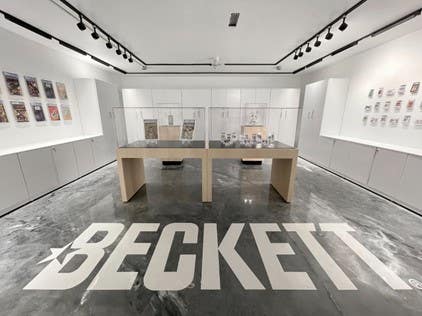News
McDonald’s Kickoff Payoff Football card promotion was led by 1985 Chicago Bears
By Sal Barry
In the fall of 1986, McDonald’s restaurants unleashed what was the largest football card set made during the 1980s.
The fast food giant ran a four-week promotion called the Kickoff Payoff, where customers could get a free football card of a player from their local NFL team. The bottom of the card had a scratch-off game coupon that revealed an upcoming game. Depending on which team won, the coupon could be redeemed for a free food or beverage prize with purchase.
McDonald’s made a 24-card set for 27 of the 28 NFL teams, a 25-card set of the Dallas Cowboys and a 30-card “McDonald’s All-Star” set that was given out at McDonald’s not near an NFL market – for a total of 703 different cards to collect.
“It’s a pretty comprehensive set,” said Rich Mueller of Champagne, Illinois, who collected the cards back in 1986. “It’s a pretty fair representation of who was in the league at the time. For a lot of players, their McDonald’s card in 1986 was the only trading card they got for their entire career.”
The McDonald’s set, when compared to the Topps set that year, is like a supersized beverage versus a regular-sized one. Topps’ 1986 Football set had “only” 396 cards (plus 26 inserts and 4 box-bottom cards), which is quite a few until you compare it to the mammoth Mickey D’s set that was roughly 75 percent larger.
But it doesn’t end there. During each week of the four-week Kickoff Payoff promotion, the scratch-off game coupons affixed to the bottom of the cards were issued in four different colors. Counting every coupon color variation plus a few error cards, the 1986 McDonald’s set had a whopping total of 2,813 different cards to possibly collect – making it the largest football set of all-time.
A Bear market
Before McDonald’s rolled out the 1986 Kickoff Payoff promotion, it first held a little practice in the football-mad city of Chicago with a test-issue set of 32 football cards. The Chicago Bears were the toast of the town, going 15-1 in the regular season, led by running back Walter Payton and a powerful defensive line that included Mike Singletary, Richard Dent and Dan Hampton. All are now in the Pro Football Hall of Fame.
“The ’85 Bears were rock stars,” remembers Frank Caputo, owner of AU Sports in Morton Grove, Illinois, a suburb of Chicago. “You have to realize, they were the first Chicago team in a generation to actually win. Chicago is a football town and loves defense. That was the best defense we ever saw in our lives, all outsized personalities. Everybody loved them. Even my mom watched them.”
Not only were the ’85 Bears rock stars, they were actually rap stars, too. The team released a song called “The Super Bowl Shuffle,” which was nominated for a Grammy Award and raised the Bears’ local and national profile.
The McDonald’s Corporation, headquartered in the Chicago suburb of Oak Brook, must have known a winner when they saw one, and test marketed the Kickoff Payoff promotion in Chicago during the 1985 playoffs. Customers could get one of 32 different Bears trading cards and win food prizes over a four-week period. The 30-second commercial that aired during late 1985 and early 1986 featured several prominent Bears players – including Singletary, Dent and Hampton – singing and flaunting their own football cards.
Like the ’85 Bears themselves, the 1985 McDonald’s Bears cards were huge, measuring 4.5” wide by 5-15/16” tall. Cards featured a large, action-oriented photo of the player on the front, and complete NFL statistics and a lengthy bio on the back.
The cards were produced by Michael Schecter Associates (noted as M.S.A.), a company that specialized in regional baseball and football card sets that usually lacked a league license. However, these cards are fully licensed by both the NFL and the NFL Players’ Association, so they include all league and team logos. The cards are printed on thin cardstock. Bears head coach Mike Ditka and defensive coordinator Buddy Ryan have cards in the set, which is noteworthy because coaches usually were not included in card sets during the 1980s.
The bottom of each card had a tear-off coupon, referred to by collectors and price guides as “tabs.” Three different color variations of the tabs were released: light blue tabs during the week leading up to the divisional playoff game, orange tabs during the week leading up to the NFC Championship game, and yellow tabs for the two weeks leading up to Super Bowl XX. Because the Bears cards with the yellow tabs were available for two weeks, it is the easiest and cheapest of the three variations to find.
In order to get a Bears card, a purchase was required, though the coupon affixed to the bottom of the card could be requested for free. As a 10-year old who thought he was pretty clever, I walked up to the cashier at my local McDonald’s one day in late 1985 and politely asked for a free football card. The cashier picked up the card and – to my horror – tore off the bottom coupon and handed it to me.
“That’s what you get for free,” she said. “You have to buy something to get the card.”
Little did she know that she destroyed the card’s future collectability.
“Everyone considers the cards incomplete without the tab,” Caputo said. “If you were a card collector at the time, then you knew that you didn’t pull the tabs off or redeem them. Today, we sell McDonald’s cards without the tabs in the dime box.”
The Bears demolished their two opponents in the playoffs, then decisively beat the New England Patriots 46-10 in Super Bowl XX. Off the field, the McDonald’s promotion was also a winner.
Going national
The Kickoff Payoff had done well enough in Chicago during the 1985 playoffs that McDonald’s ran the promotion again at the start of the 1986 season; this time, in every McDonald’s restaurant across America. The possibility of collecting 24 cards from every team was an enticing challenge for many football collectors who had nothing to chase once they owned a complete 1986 Topps Football card set.
Now, they could trade with collectors from other NFL cities to get cards of different teams. Or, if they lived near several NFL cities, they could try and get different cards themselves.
“In Champagne, the local McDonald’s gave out Bears cards,” Mueller said. “But if you drove a little west, you would get Cardinals cards, because they were still in St. Louis.
And if you drove a little bit east, you’d get Indianapolis Colts cards.”
McDonald’s 1986 cards were smaller than the 1985 Bears cards, measuring 3-1/8” wide by 4-11/16” tall, and again made from thin stock. Sets were printed on 30-card sheets; this allowed six cards of popular players for each team to be double-printed.
In 1986, the tear-off coupon at the bottom of each card was covered with scratch-off ink. Each week during the four-week promotion, the color of the scratch-off ink was a different color: blue the first week, black the second week, gold the third week and green in week four. Scratching off the ink would reveal a matchup between two teams and the food prize you’d receive depending on which team won. Cards with blue tabs tend to be harder to find, while cards with green tabs are by far the easiest.
“Thirty years ago, and with no internet then, it was almost impossible to collect them all,” Caputo said. “My original goal was to get all 28 teams, all four colors. Then I narrowed it down to all 28 teams, regardless of the coupon color. Some of the teams were really tough to find back then; that’s why I gave up.”
Like any good oddball set, the 1986 McDonald’s set has a few interesting anomalies. For example, the Chicago Bears cards used photos from Super Bowl XX and feature a “Super Bowl XX Champions” logo at the bottom. Washington cards used the “Redskins 50th Anniversary” logo in the upper-right corner instead of the team’s standard logo.
Also, the Dallas Cowboys set is the only team set to have 25 cards instead of 24. Herschel Walker, who joined the Cowboys in 1986 was not initially included in the Dallas set. Due to his popularity, a card of him was printed later during the promotion. Walker cards do not have the scratch-off ink covering the coupon at the bottom, which is colored light green. This is the only card in the entire 1986 Kickoff Payoff set that does not have four variations.
The Miami Dolphins set also technically has 25 cards, but for a different reason. There is an error card of running back Joe Carter that pictures teammate and fellow running back Tony Nathan by mistake. Carter’s card was double-printed, with one card on the 30-card sheet being the error and the other being the correct version, so neither is more difficult to find than the other. The error card was made in all four different color tab versions.
For those who did not live in an NFL city or its surrounding territory, McDonald’s instead gave out a 30-card “All-Star” set, which featured a cross-section of the league’s best players. These cards use the same photos as the regional team sets, but also have a “McDonald’s All-Star Team” logo near the bottom. None of the cards are double printed; however, the set was made in such large quantities that it is by far the easiest team set to find.
Posters of every NFL team, plus one for the “McDonald’s All-Stars” were displayed at McDonald’s during the promotion. A larger version of the Bears poster, printed on both sides and made to be hung from the ceiling, was also made for display in Chicago-area restaurants. The posters showed all of the cards in that area’s team set, serving as sort of a visual checklist for collectors back in 1986. For some reason, each poster shows six cards as having red tabs instead of gold tabs. Although not publicly available in 1986, the posters can easily be found for sale online nowadays.
Finally, one more poster was given directly to collectors. Measuring 22.5” by 25,” the “Super Team Saver Sheet” had blank spaces to affix 24 cards. The poster has NFL and McDonald’s logos and instructs customers to “Collect all McDonald’s trading cards and place them in the surrounding areas to complete your favorite NFL team poster.”
Mike Mosier, owner of ColumbiaCityCollectibles.com and who has specialized in oddball and regionally issued sports cards since 1985, believes that these were given out in local newspapers.
“They came folded and are on newsprint stock,” Mosier said. “They were probably produced by the newspapers, or maybe they were made by McDonald’s and given to papers to stuff into the Sunday edition. I don’t see a lot of these.”
Cards a plenty
Despite being over 30 years old, the 1986 McDonald’s Kickoff Payoff football cards – as well as the 1985 McDonald’s Bears cards – are not difficult to find in tip-top shape.
“My God, those cards are so plentiful,” Caputo said. “Football card collecting was really starting to take off in ’86. It wouldn’t surprise me if some sharp card store owners at the time got them straight from McDonald’s managers. I can’t imagine all these cards making it out of the store, unscratched and in such nice shape, through the general public.”
The apparent success of the promotion – be it customers ordering food to get a football card, or enterprising restaurant managers dealing the cards out the back door – caused McDonald’s to print many of these cards, particularly towards the end.
“McDonald’s isn’t a tiny business,” Mosier said. “They don’t do too much in a small way.”
That said, a lot of cards were made, but not all teams were made equally.
“Some teams are much tougher to find than others,” Mosier said. “It depended on how many McDonald’s an area had at the time.”
Indeed, some team sets are much easier to find than others. Take Chicago and Buffalo, for instance. Chicago has four times the square mileage than Buffalo. A complete green-tab set of 1986 Bears could be bought at a card shop in 1986 for around $10, whereas a blue-tab set of Bills would go for upwards of $100.
“That used to be the case,” Mosier said. “Even though the Bills’ cards are probably 20 times harder to find than Bears’ cards, the price differential isn’t nearly what it used to be.”
To compare those two teams, most Bears sets can be found in the $2-$10 range, while most Bills sets around $7-$15. (At press time, no recent sales data for blue-tab sets was available for either team.)
Selling via the internet drove prices of most sports cards down, including the 1986 McDonald’s football cards. Most of the McDonald’s cards are affordable today; plenty of them that can be found in mint shape, with tabs intact and unscratched. Collectors who want the challenge of collecting the largest football card set of its era – or of all-time, if you count all variants – might want to give this set a look. As a bonus you don’t have to eat at McDonald’s to get them.
“It was a short and sweet promotion that came and went quickly,” Mueller said. “Luckily for collectors, there were enough cards that got out to where they’re pretty accessible today.”
Sal Barry is a freelance contributor for Sports Collectors Digest. He can be reached at sjb@puckjunk.com or on Twitter @puckjunk.

